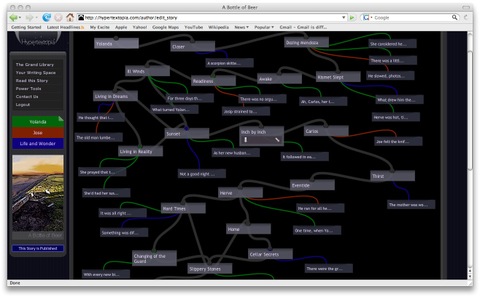When I first started writing more seriously a little over ten years ago now, starting out with a novel sort of squelched the idea of longhand though I still scribbled a bit here and there, especially when we had only a single computer to even rewrite into. I’ve always loved the feel of a pencil–more so than a pen–in my hand, a hand broken into shape by the whap of a ruler wielded by penguins (trans. nuns) and danced down in steps on a clean white ballroom floor. So much so, that Arithmetic (what we called Math way back when) was my third favorite subject after English and Penmanship, and even a couple years ago, Algebra became a love of writing symbols and figures and who cared if they made any sense?
So it took a while for me to write directly from brain into keyboard, fingers picking out words by clicking on images of letters rather than forming the letters into words by drawing curved lines. Sometimes I’d write something out in longhand, transfer it to type and it just didn’t sound the same. It’s much easier to make corrections in typing, of course, and in time I learned to think ‘onto the monitor’ as if the fingers were no part of it at all; much as the pencil loses itself except as a tool.
Okay, time to move on. Once something is easy, another path need be found, a higher mountain climbed, anything, anything at all to make one more aware of the ongoing learning process that all communication really seems to be.
Paragraphs, thoughts, become text boxes, writing spaces. Backstory, clues, foreshadowing, all becomes trails off the main path. Stuck between a character married or single? A miraculous recovery or a decapitating automobile crash? No need to choose; use both. This is the true hypertext capability, and it opens up for the reader but more for the writer to discover all the ways through a story without needing to merely select one to display.
I’m not sure I’ll ever use this multiple choice rhythm of story to write in; I never liked multiple choice questions on tests. To me, you either know something or you don’t. Choices given were either so obviously dopey to be no test of skill or knowledge, or as I’ve seen lately, so tricky dependent upon exact situation and meaning and syllable count that it is just a guessing game. Choice in hypertext reading is not based on knowledge–though it may be based on curiosity and some skill at uncovering an author’s patterns–since a word of text is a link to ….what? The word chosen is the author’s decision; all then we need to do is decide what he’s possibly thinking on linking. This would, it seems to me, bring the damn author right back into the story hypertext claims to prohibit his overbearing self to inhabit.
But hypertext need not be used for maze and intrigue, choice and enjoyment, but can as well be used in any way a writer can tell a story in the best way he sees fit. I’ve just been through a short story in BASS 2007 that used italics for backstory and avoided their use for thoughts of multiple characters. Gee, hypertext would sure work here. Dreams, hopes, woulda-coulda-shoulda’s work extremely well in hypertext. The Road Not Taken would be a shoo-in.
I have worked in Storyspace, an elaborate system for hypertext that just had me nuts over opportunity and ideas. I loved it. I’ve just worked a short story in Hypertextopia that gave me not what I was looking for, but found me working into it in a natural form of thinking, clicking "Shards" without considering whether it was a Shard or a Fragment but coming as natural as clicking an A on the keyboard or forming it in cursive with pencil in hand.
I suppose it all comes down to this: If it works, use it. If you love it, enjoy it. If you can share it with others, you’ve done a good thing.


 The Lost Children: A Charity Anthology
The Lost Children: A Charity Anthology